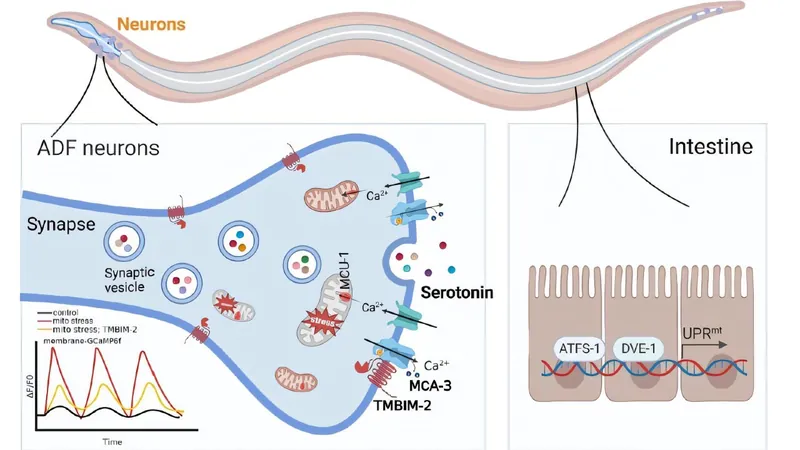
Groundbreaking Study Uncovers How Neuronal Calcium Oscillations Influence Inter-Tissue Communication and Aging!
2025-03-25
Author: Daniel
Introduction
A team of scientists has made a fascinating discovery that could reshape our understanding of how our neurons communicate with other tissues and regulate aging. Led by Dr. Tian Ye at the Institute of Genetics and Developmental Biology, Chinese Academy of Sciences (CAS), the study dives into the often-overlooked role of mitochondrial function in neurons and its implications for overall health.
The Role of Mitochondria
Mitochondria, known as the powerhouse of the cell, are vital for maintaining energy balance and cellular vitality. However, chronic stress affecting neuronal mitochondria can have grave consequences—not only damaging neurons but also disrupting metabolic functions and influencing other tissues throughout the body.
Key Findings
Recent findings published in the Journal of Cell Biology reveal that chronic mitochondrial stress in neurons can trigger the release of serotonin. This process is facilitated by TMBIM-2-dependent calcium (Ca²⁺) oscillations. More intriguingly, these oscillations activate the mitochondrial unfolded protein response (UPRmt) in the intestine, linking neuronal health with gut function.
Collaboration of TMBIM-2 and MCA-3
The research team discovered that TMBIM-2 operates alongside the plasma membrane calcium pump MCA-3, a pump that helps maintain synaptic calcium levels. This collaboration is crucial for sustaining persistent calcium signaling at synapses—essential for neuronal communication and signaling.
Impact of Aging
Age is a critical factor in this equation. The researchers observed that the expression of TMBIM-2 diminishes with aging. Experiments performed on Caenorhabditis elegans, a type of microscopic worm, showed that overexpressing TMBIM-2 not only reversed cognitive decline but also extended the lifespan of older subjects, highlighting its protective effects.
Broader Implications
This study has broader ramifications, as TMBIM-2 is highly conserved in both humans and mice—indicating that its age-related decline in neural tissues could have significant implications for human health as we age. The findings underscore the importance of neuronal calcium oscillations not only in cellular signaling but also in inter-tissue communication, suggesting that targeting these mechanisms could become a new frontier in combating age-related degeneration and metabolic disorders.
Conclusion
With these innovative insights, researchers are now equipped with potential therapeutic targets to explore in efforts to promote healthy aging and enhance metabolic well-being. This discovery might just be the key to unlocking a longer, healthier life!



 Brasil (PT)
Brasil (PT)
 Canada (EN)
Canada (EN)
 Chile (ES)
Chile (ES)
 Česko (CS)
Česko (CS)
 대한민국 (KO)
대한민국 (KO)
 España (ES)
España (ES)
 France (FR)
France (FR)
 Hong Kong (EN)
Hong Kong (EN)
 Italia (IT)
Italia (IT)
 日本 (JA)
日本 (JA)
 Magyarország (HU)
Magyarország (HU)
 Norge (NO)
Norge (NO)
 Polska (PL)
Polska (PL)
 Schweiz (DE)
Schweiz (DE)
 Singapore (EN)
Singapore (EN)
 Sverige (SV)
Sverige (SV)
 Suomi (FI)
Suomi (FI)
 Türkiye (TR)
Türkiye (TR)
 الإمارات العربية المتحدة (AR)
الإمارات العربية المتحدة (AR)